'Rarest Penguin On Earth' Caught On Camera In Antarctica
New footage from BBC America shows what just might be a one-of-a-kind emperor penguin.
Unlike its famous black and white counterparts, this one is covered almost entirely in black feathers ― the result of a rare genetic mutation called melanism.
“This could be the first-ever footage of an all black emperor penguin,” the clip from BBC Earth’s wildlife show “Dynasties” notes.
While the mutation may appear from time to time, the dark color makes it easier to spot by predators, making it very unusual for a penguin like this one to survive to adulthood.
“He or she could be the only one of its kind,” the clip states:
National Geographic has documented melanism on other types of penguins, especially the king penguins, which appear to have the mutation more often than others.
However, the magazine’s website says it has also found evidence of partial melanism in Adélie, chinstrap, gentoo, macaroni and royal penguins.
(h/t Digg)
Also on HuffPost
Preparing to launch from the sea to the sea ice, an emperor penguin reaches maximum speed.

An airborne penguin shows why it has a need for speed: To get out of the water, it may have to clear several feet of ice. A fast exit also helps it elude leopard seals, which often lurk at the ice edge.
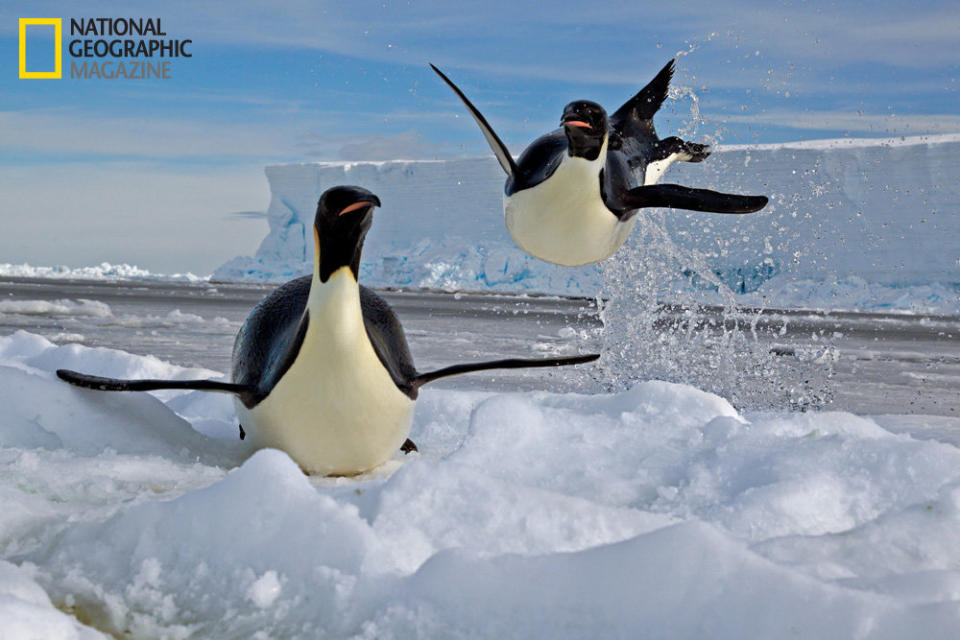
Life is safer at the colony, where predators are few and company is close.
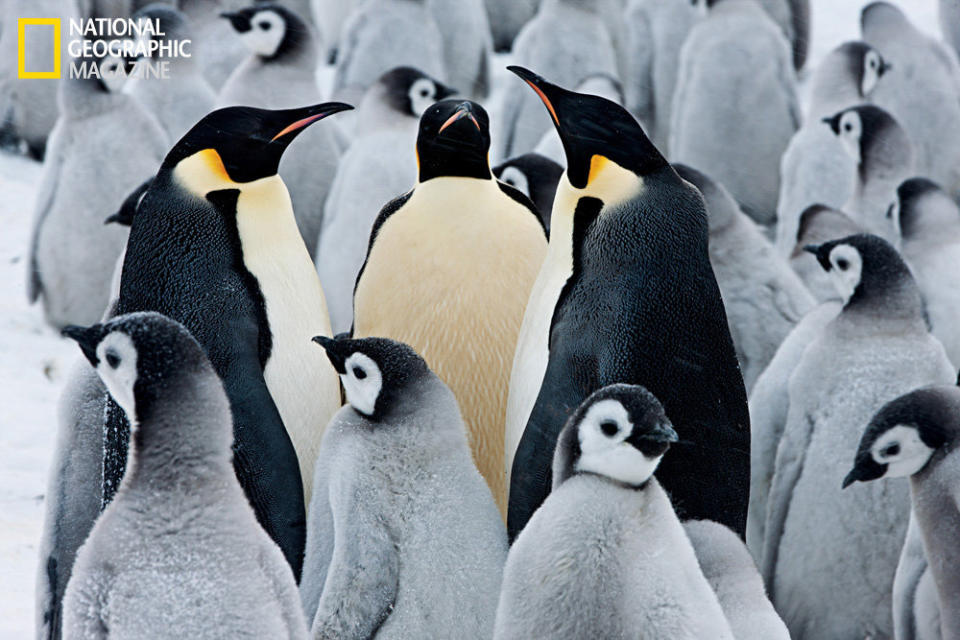
The danger of ambush by leopard seals is greatest when entering the water, so penguins sometimes linger at the edge of an ice hole for hours, waiting for one bold bird to plunge in.
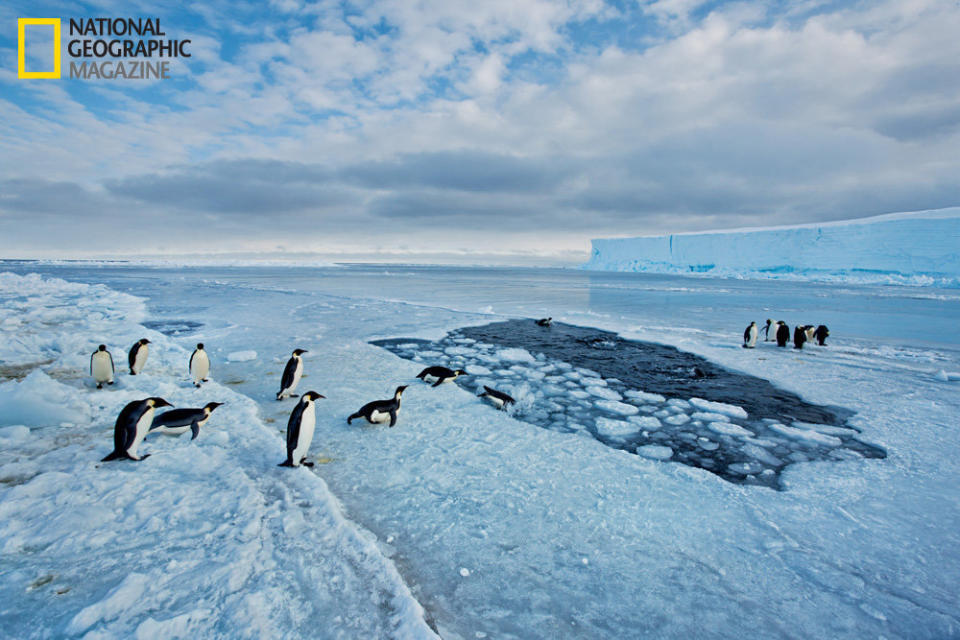
“These penguins have probably never seen a human in the water,” says photographer Paul Nicklen, “but it took them only seconds to realize that I posed no danger. They relaxed and allowed me to share their hole in the sea ice.”
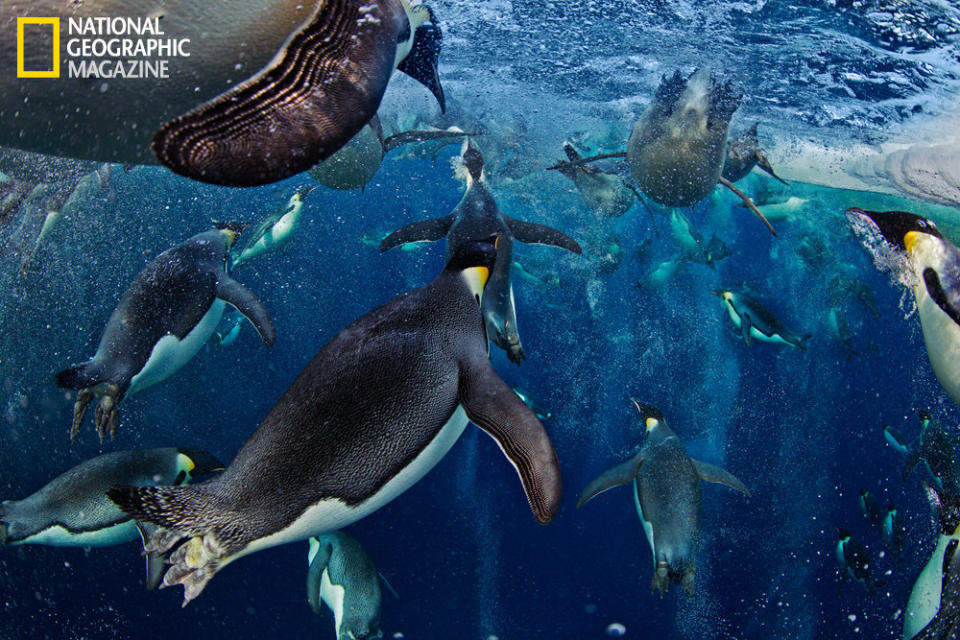
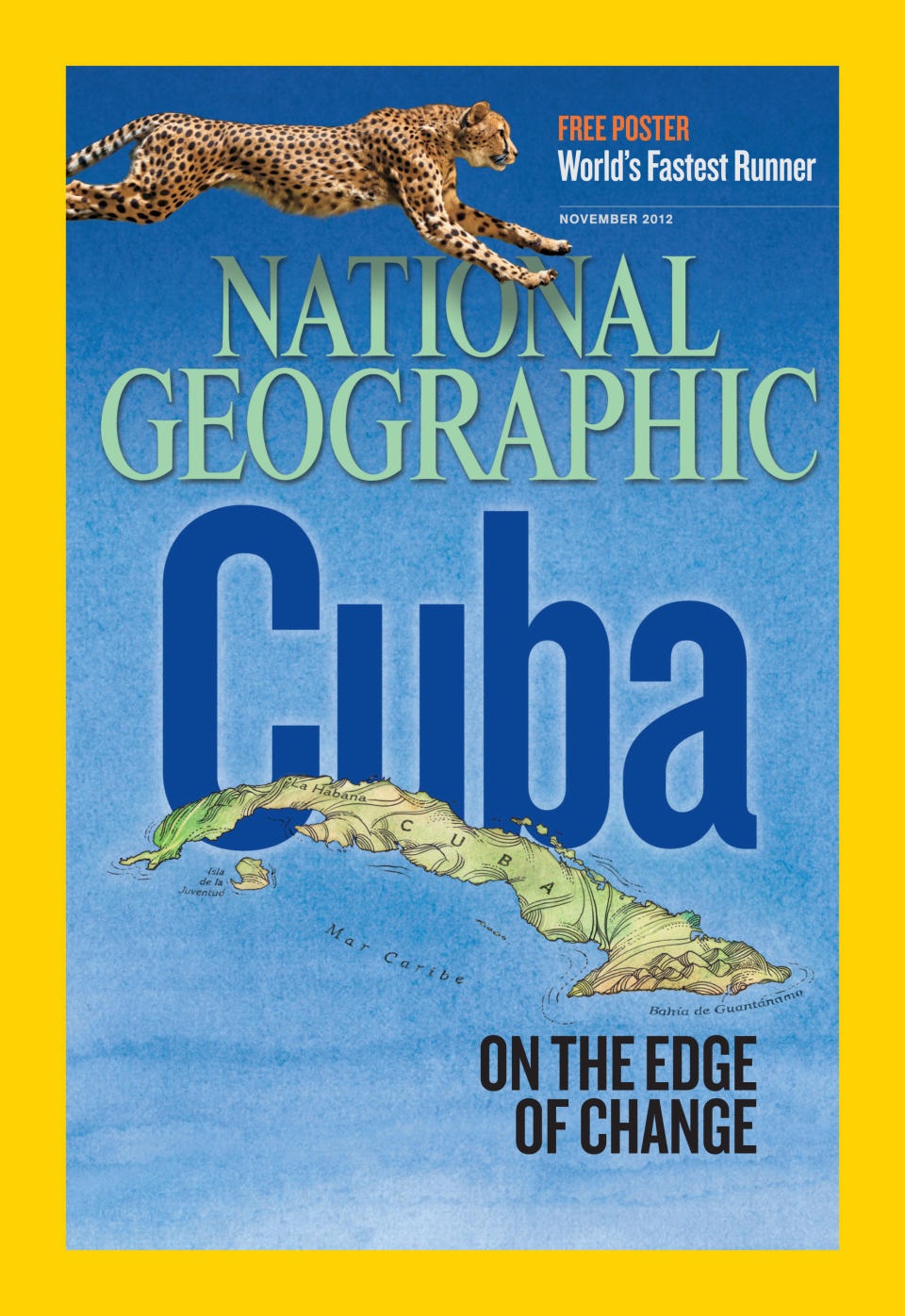
Love HuffPost? Become a founding member of HuffPost Plus today.
This article originally appeared on HuffPost.

